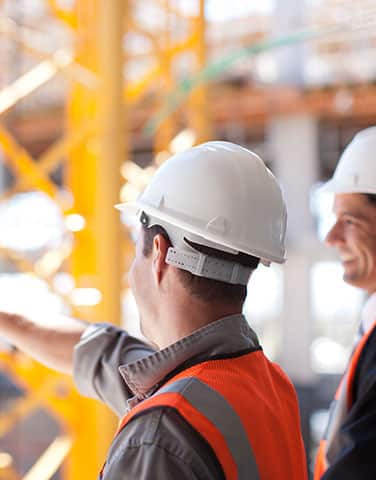
Building Safety Act 2022 – What you need to know
Background
The Building Safety Act (the Act) came into force on 28 April 2022.
This Act forms the centrepiece of the Government’s new safety regime and the new legislation affects all aspects of building safety from planning to construction through to dispute resolution, when everything doesn’t quite go to plan!
You would be forgiven for feeling slightly overwhelmed if you are still struggling to come to terms with the implications of this legislation. At 264 pages long, suffice to say it is not an easy read and while passing through Parliament at committee stage it was described as “a dog’s dinner which is a car crash for leaseholders and which is hopelessly vague and impractical”.
On numerous occasions while passing through Parliament, the Bill was been treated like a political football, many provisions having been chopped, changed and sometimes disposed of without notice, but all nevertheless taking place under the febrile gaze of the media and set against the explosive background of a very real human tragedy.
Who should read this article?
This commentary is intended for developers, contractors, construction professionals and indeed residential occupiers involved in development and construction or affected by historic cladding/ building safety defects. It is designed for those seeking one or all of the following:
- an outline understanding of how the Act works;
- an understanding of the key provisions within the Act which take immediate effect and may therefore have implications now for them personally or their business; and
- for those seeking an understanding of certain provisions within the Act which are yet to be implemented but which are “coming down the line”, and which may have future consequences which may need to be considered for planning purposes now.
Understanding the Act
It is useful to think of the Act as a framework designed to address a number different themes all arising from the Grenfell tragedy.
These themes can be summarised as follows:
- The realignment of the liability landscape for building defects.
- A restructuring of the building regulation approval process for higher risk buildings.
- The creation of a new regime for managing the safety risk presented by “higher risk” buildings.
- The establishment of a payment mechanism requiring developers to meet the cost of the new building safety regime as well as partially meeting the cost of rectifying historic building safety/cladding defects.
What you need to know now
Application
Going forward, the Act applies to buildings which it defines as either “higher risk”, “in scope” or “relevant”.
The competing definitions are somewhat confusing as they are not consistent but to summarise, as an initial guide, you should consider that the Act applies to you if your building:
- is at least 18 meters in height [from ground level], and
- is at least 7 storeys high, and
- contains at least 2 residential units, or
- is at least 7 stories high and contains a student accommodation, a care home or hospital facilities[1].
If the building falls within these criteria, only then should you check to see if there is any basis on which the provisions of the Act may have been dis-applied.
It is also worth noting that the Act creates a much wider liability for developer, contractor, manufacturers and other construction professionals responsible for historic safety defects to residential dwellings.
Operation of the Act
Not everything contained within the Act was implemented on the date it received Royal Assent. The vast majority of provisions will not come into force for the next 12-18 months as the legislation is developed. The implementation of the Act can be broken down into phases:
- Phase 1 (in effect from 28 June 2022)
- Phase 2 (planned to take effect October 2022-April 2023)
- Phase 3 (planned to take effect April 2023 – October 2023). Read more on the building safety transition plan on GOV.UK
Whilst the provisions in Phase 1 are now fully effective and therefore clearly defined, Phases 2 and 3 create an outline framework pursuant to which the Secretary of State can bring forth Statutory Instruments (SI’s) which will give practical detail as to how certain elements of the Act will operate in practice.
Phase 1: Defective Premises/ changes to the liability landscape
Changes to Limitation Periods
The Act immediately brought into effect changes to the Defective Premises Act 1972 (the DPA) extending the limitation period in which building owners, homeowners and leaseholders can bring a claim.
It is worth remembering that the DPA imposes an obligation on “persons taking on work in connection with the provision of a dwelling” to see that:
“the work which he takes on is done in a workmanlike, or as the case may be, professional manner, with proper materials and so that as regards that work the dwelling will be fit for human habitation when completed”
The Act extended the limitation period in which an affected party can bring a claim under the DPA as follows:
- From 6 years to 30 years for dwellings completed before 28th June 2022.
- From 6 years to 15 years for dwellings completed after 28th June 2022 [This 15 year limitation period will also apply to refurbishments whereas the DPA only applied to construction of new properties].
Claims under the Building Act 1984 (BA)
The Act has brought into effect Section 38 of the BA.
The effect of bringing into force this long dormant provision is potentially likely to have wider consequences than the changes to limitation periods under the DPA because:
- The class of persons potentially able to bring a claim is not tightly restricted. A proprietorial interest is not required, anyone who has sustained death, personal injury “(including any disease and any impairment of a person’s physical or mental condition)” is a potential claimant.
- Liability arises from a party breaching a duty imposed by the Building Regulations. This offers a wider scope of claim than those subject to the “human habitation” test under the DPA.
Demonstration of a failure to carry out work in a “workmanlike” manner or using “adequate and proper materials” may be sufficient to achieve a successful claim for damages.
Building Liability Orders
The Act grants the High Court the right to impose Building Liability Orders. The Orders can be made by the Court where a liability has been incurred as a consequence of:
- a breach of the DPA, or
- a breach of the BA, or
- as a result of a “building safety risk”.
The purpose of the provision is to make corporate bodies which are “associated” with an entity that has accrued a liability, as set out above, also liable to meet the cost of that liability.
It is worth noting those likely to be considered as “associated” companies will be interpreted widely given the comprehensive drafting of this category within the Act.
It has been common in the past for developers to set up special purpose vehicles (SPVs) to carry out residential developments and then wind-up those SPVs at the end of the project, thereby closing off a route for owners of dwellings to bring a claim for defects in their premises. This new provision within the Act allows a claimant to “look behind the curtain” and pin that liability on the true owners of such SPVs.
Direct rights of action against product manufacturers
If you had thought that the Act only represented a change in the liability landscape for developers, contractors and other construction professionals, think again! S147 to S151 of the Act opens up those manufacturing, marketing or supplying construction products used on dwellings to claims from anyone with a legal or equitable interest in the a property for losses, not just for the rectification of defects but also for economic losses where that entity:
- fails to comply with a construction product requirement in relation to a construction product;
- markets or supplies a construction product makes a misleading statement in relation to it, or
- manufactures a construction product that is inherently defective,
resulting in a the property in question being uninhabitable.
The limitation period for claims to be brought under this new provision is 30 years for retrospective claims that is in respect of buildings which have already been completed and 15 years from date of completion for those buildings which have yet to be completed.
What you need to know for the future
Phases 2 & 3
Phases 2 and 3 will introduce the “specifics” of the new building safety regulatory regime via the implementation of Statutory Instruments. It is worth noting that the Act, as it stands, already creates the framework of the regime including:
- the establishment of the role of the “Building Safety Regulator” responsible for overseeing the safety of “higher risk buildings”;
- the creation of the “duty holder” role, largely mirroring those already established for the purposes of the CDM Regulations during the design and construction phase;
- the creation of the role of “accountable person” whose responsibilities will be clarified in Phase 3 but will likely include:
- applying for Building Assessment Certificates for registered buildings when requested to do so by the new Building Safety Regulator;
- assessing building safety risks relating to their building;
- taking all reasonable steps to prevent the occurrence of a major incident in the building;
- keeping a Safety Case Report showing the building is safe for occupation; and
- dealing with complaints from residents, providing certain information to them and maintaining a Resident’s Engagement Strategy to promote the involvement of residents in maintaining the safety of the building;
- the imposition of an obligation to register higher risk buildings with the Building Safety Regulator by October 2023;
- the introduction of broad powers designed to prevent “prescribed” from carrying out development, and
- the introduction of a new planning and construction process for all higher risk buildings, through three new “Gateways” where the building owner must demonstrate that safety has been considered at each and every stage of a building’s construction.
It is worth noting that we don’t have enough secondary legislation / guidance yet to be able to have clarity as to how all of the above arrangements will work in practice. The picture will become clear over the coming months and Cripps LLP will provide updates as required.
Action for now
- If you are a developer, contractor, construction professional, or manufacturer who has carried out construction work or services for developments which you think may be affected by building safety defects then you will have probably already carried out an audit of those buildings and the resulting risks. That audit should be revisited in light of the radical changes to the liability landscape brought in by the Act and a strategy determined as to how best to manage the potential increased exposure.
- If you are a building owner, flat owner or management company you should be considering the wider opportunities available to you to recover the cost of historic building defects afforded by the new legislation and how to potentially formulate a claim.
- If you are a developer, contractor, construction professional or building manager you need to understand, now, the obligations which will be placed upon you in order to comply with the new building safety regime as it applies through the various stages of development through from the initial planning stage through to the safe operation of the completed building as the consequences of failing to meet those obligations.
How we can help
The Act is complex, and this is only a simplified guide to some of the most important issues. If you’d like further advice on any of the points raise then please contact Iain Benson in the construction team.
[1] The Act allows the definition of “higher risk buildings” to be amended – pursuant to the Commencement No. 1 Regulations the Government will be empowered to amend the definition as of 28 June 2022. Consequently, it is not safe to assume that the 18 metre/seven storey restriction will remain indefinitelyIf you are in any doubt as to whether the Act applies to your Building you should seek legal advice.
Talk to us about
Related services









